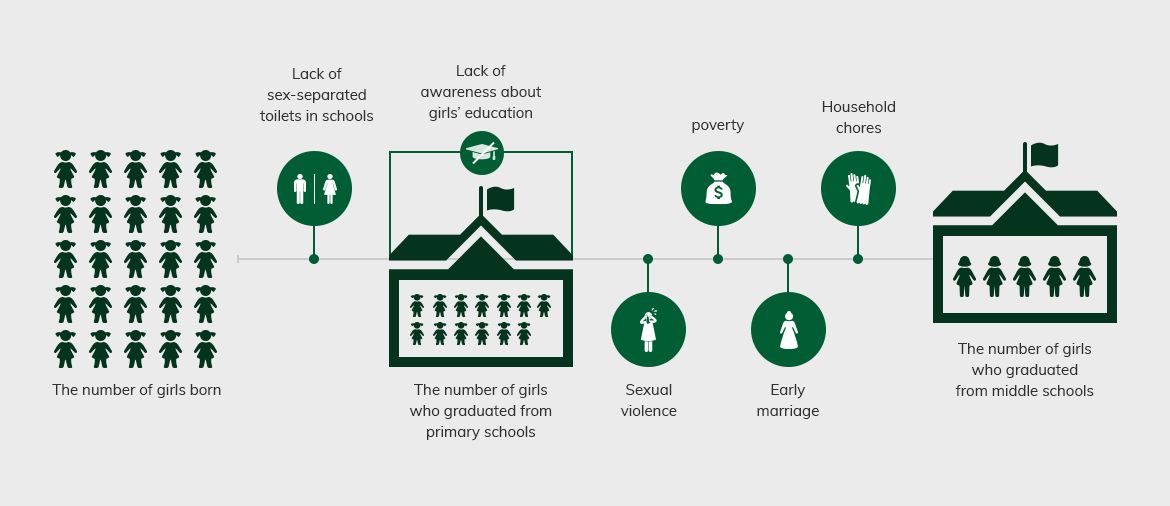
Global Health
Global health problem of one country
is not a mere national problem.
HOME  Global Health
Global Health  International Cooperation
International Cooperation
International Cooperation
A single country or institution do not quickly solve
problems in global health.
Many countries, international organizations such as the World Health Organization and the UN,
non-governmental organizations (NGOs), and corporations would have a lot of difficulty in solving the
problem if they don't work together.

Many countries, international organizations such as the World Health Organization and the UN, non-governmental organizations (NGOs), and corporations would have a lot of difficulty in solving the problem if they don't work together. The recent spread of the concept of Corporate Social Responsibility around the world has led to a new perception that companies are not only profit-generating groups, but rather agents that use their resources as members of the community to make reasonable efforts to influence the people.
GAVI, a coalition of corporations, international agencies, and states, as a PPP (Public-private partnership), is playing a significant role in providing vaccines to the vulnerable all around the world. South Korea has become the first Asian donor country of GAVI in 2010. The PPP model is innovative and performs wonderfully. In addition to Gavi, Korea also provides annual contributions to the Global Fund (Global Fund to Fight AIDS, Tuberculosis, and Malaria), the Coalition for Epidemic Preparedness Innovations (CEPI), and the unitaid. These global health initiatives play a leading role in the global supply of COVID-19 vaccines.
Korea

The health sector is one of the new areas of focus in Korea's ODA. In 2015, Korea provided 84% of its overall ODA budget in the form of bilateral grants. This budget was supported as developing country health facilities, health insurance, medical services, health policy, and administrative services. Korea has provided 16% of its total ODA in health (about $ 35 billion) in the form of multilateral donations such as international organizations, which is well below the OECD average of 55%. This amount was funded primarily by the Global Fund to Fight AIDS, the Global Fund, the Gavi Alliance, the Regional Development Bank, and the UN Organization.
Health is a fundamental right of all human beings and a prerequisite for economic and social development in developing countries. KOICA has established a Medium-Term Health Strategy (2016- 2020) to provide quality health care services to the people of developing countries and to make efforts to improve universal health.
Girls Health

We have created an environment in which education can be provided to high school without discrimination in both sexes. In many countries, however, girls are alienated from the right to education they have to enjoy because they are women.
The number of girls graduating from elementary schools is significantly less than the number of girls born, and the number of girls graduating from secondary schools is much less. This is for a variety of reasons. Some girls are forced to work instead of school because they have to support their impoverished families. In some countries, socio-cultural customs also make the girls married at a young age.
Even if girls go to school, it is not a situation where girls can study comfortably. There are problems such as sexual violence encountered by children in school, sexual harassment problems in school, lack of awareness about girls' education, lack of sex-separated toilet. These poor educational environments have a tremendous impact on girls' educational achievement.

Girls Health_International Society
- The United States collaborates with national institutions, NGOs,
and civil society to carry out various projects and programs. -
The U.S. Agency for International Development (USAID) has been running The Demographic
Health Surveys (DHS) program for the last 30 years. They collected health data from Africa,
Asia, and South America to support HIV / AIDS prevention, malnutrition, and maternal health.
Providing proper data-based support is cost-effective and time-effective. With support for each
region and context, the United States has contributed a lot to the international girl's health
- ‘Strategic Vision for Girls and Women’ of Department For International Development
(DFID) aims to prevent poverty by opening up the possibility of girls and women -
It is to power the girls and women to empower them to have their voice and to choose and control
their lives on their own. ‘Leaving no-one behind’ is also included. To achieve this, we need an environment
where we can connect girls and women who have grown up as social leaders and influential citizens with
open economic, social, and political decision-making bodies. It will also include creating social norms that
support how girls and women can do what is valuable in society and how the opportunities they will have can have
an impact.
- The Dutch Government
-
Since 2011, the Dutch government has formed a network of NGOs, governments, and organizations
called the SRHR (Sexual Reproductive Health and Rights) Alliance to promote sexual health and rights
in developing countries such as Africa and Asia. This network of NGOs and institutions from each donor
country, as well as the organizations in the Netherlands, provides education and services on sexua
reproductive health, mainly for 10-24-year-olds and women. The goal is to participate in establishing
and enabling everyone to live a healthy life. The Dutch government gave fund-aid to nine countries
(Kenya, Tanzania, Pakistan, Bangladesh, Malawi, Indonesia, Ethiopia, Uganda, and India)
with a budget of approximately € 45 million for five years until 2015.
The Netherlands has long supported the bold program for sexual reproductive health
throughout the world - safe abortion, sexual reproductive health for adolescents
discrimination based on gender identity, and sexual orientation - in particular.
In particular, the Netherlands has provided financial support to prevent many women from
dying from unsafe abortions in developing countries. The SRHR Alliance is working
with the civil society on an international level to facilitate this support
The main activities are providing facilities for maternal health, education for sexual and
reproductive health educators for adolescents and women, support for local organizations for
policy advocacy, and campaigns for sexual health promotion.
- Reference
-
- USAID

- DFID - Stepping-up a gear for Girls and Women: Updates to DFID’s Strategic Vision for Girls and Women, to2020 and beyond

- Opening doors and unlocking potential : Key lessons from an evaluation of support for Policy Influencing, Lobbying and Advocacy (PILA)
- (Ministry of Foreign Affairs of the Netherlands, 2015)
- UNITE FOR BODY RIGHTS – SRHR ALLIANCE END-OF-PROGRAMME EVALUATION, SYNTHESIS REPORT
- (Kaleidos Research and International Centre for Reproductive Health, Ghent University, 2016)
- White House Factsheet

- USAID


